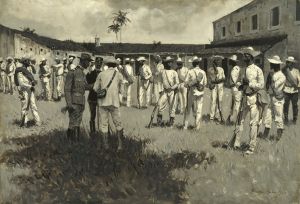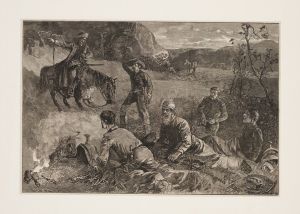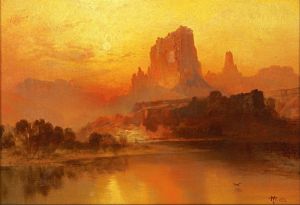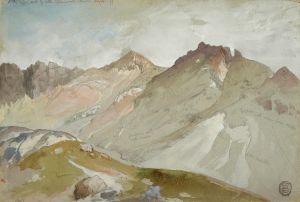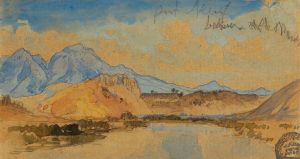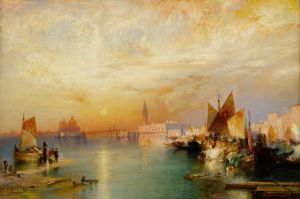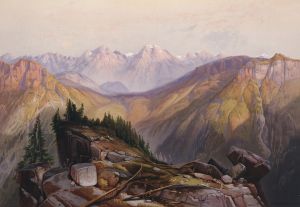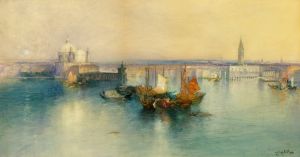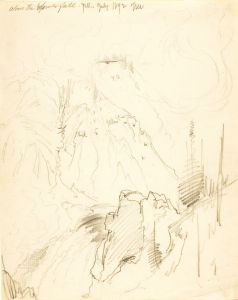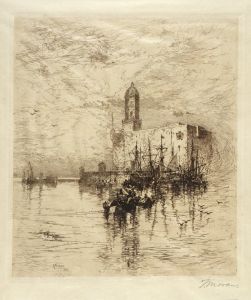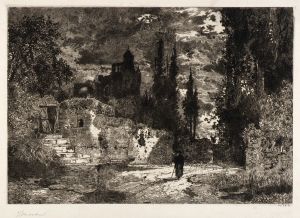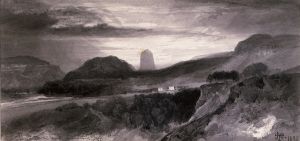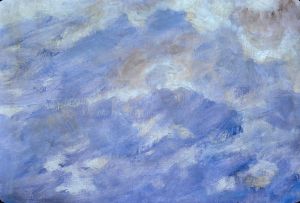
Shin-Au-Av-Tu-Weap , Cañon Of The Colorado. Utah Ter.
A hand-painted replica of Thomas Moran’s masterpiece Shin-Au-Av-Tu-Weap , Cañon Of The Colorado. Utah Ter., meticulously crafted by professional artists to capture the true essence of the original. Each piece is created with museum-quality canvas and rare mineral pigments, carefully painted by experienced artists with delicate brushstrokes and rich, layered colors to perfectly recreate the texture of the original artwork. Unlike machine-printed reproductions, this hand-painted version brings the painting to life, infused with the artist’s emotions and skill in every stroke. Whether for personal collection or home decoration, it instantly elevates the artistic atmosphere of any space.
"Shin-Au-Av-Tu-Weap, Cañon Of The Colorado. Utah Ter." is a painting by the renowned American artist Thomas Moran, known for his dramatic landscapes of the American West. Moran, born in 1837 in Bolton, England, immigrated to the United States with his family in 1844. He became one of the most prominent landscape painters of the 19th century, particularly recognized for his depictions of the American frontier, which played a significant role in the establishment of national parks.
This particular painting, "Shin-Au-Av-Tu-Weap, Cañon Of The Colorado. Utah Ter.," captures the grandeur and majesty of the Colorado River's canyons in what is now the state of Utah. The title itself reflects the indigenous name for the area, "Shin-Au-Av-Tu-Weap," which is believed to be a reference to the land of the Paiute people, who inhabited the region long before European settlers arrived. The term "Cañon Of The Colorado" indicates the focus on the Colorado River's dramatic canyons, which have been a source of inspiration for many artists and explorers.
Thomas Moran's work was instrumental in bringing the beauty of the American West to the attention of the public and policymakers in the eastern United States. His paintings, along with those of other artists and photographers, were influential in the creation of the National Park Service and the designation of areas like Yellowstone and the Grand Canyon as national parks. Moran's ability to capture the vastness and unique light of these landscapes helped to convey their importance and the need for their preservation.
The painting is characterized by Moran's signature style, which includes vivid colors, meticulous attention to detail, and a romanticized portrayal of the landscape. His use of light and shadow creates a dynamic composition that draws the viewer into the scene, evoking a sense of awe and wonder. Moran's technique often involved preliminary sketches and studies made on-site, which he would later use to create larger, more detailed works in his studio.
"Shin-Au-Av-Tu-Weap, Cañon Of The Colorado. Utah Ter." is a testament to Moran's skill as a painter and his deep appreciation for the natural world. His work not only captures the physical beauty of the landscape but also reflects the cultural and historical significance of the region. Through his art, Moran contributed to a broader understanding and appreciation of the American West, influencing both contemporary and future generations.
Today, Thomas Moran's paintings are held in high regard and are part of numerous public and private collections. His legacy continues to inspire artists and nature enthusiasts alike, serving as a reminder of the enduring beauty and importance of preserving the natural landscapes of the United States.





